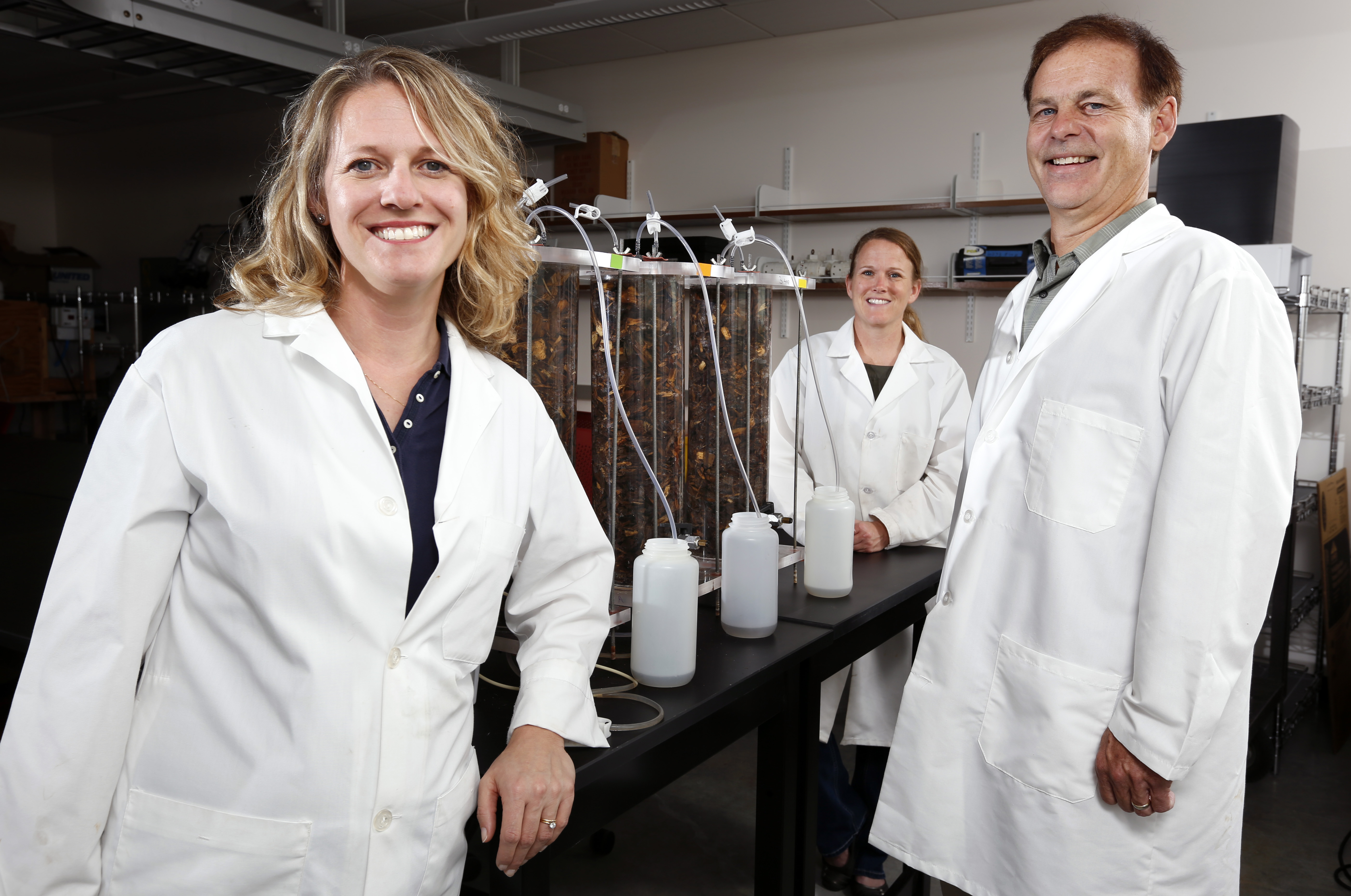
Converting Nitrate to the Air
Bioreactors are water quality improvement tools gaining interest from landowners and researchers. The edge-of-field equipment is designed to receive water from drainage tiles and filter that water through woodchips where nitrogen is converted to a harmless gas.
Michelle Soupir, an associate professor of agricultural and biosystems engineering, has two woodchip bioreactor projects currently underway. Her main interest is efficiency. Soupir studies the effectiveness of the bioreactor
system and fill materials in removing nitrates from tile water drainage. She hopes her projects add valuable field data to support the use of bioreactors to improve water quality in Iowa and beyond.
“We are looking at different fill materials and how long these materials remain effective in nitrate removal. We are also adding amendments of varying concentrations to manipulate the system,” says Soupir. “Our other project examines bioreactor effectiveness through controlling water hydraulic retention time and measuring bromide concentrations to study flow characteristics in the bioreactor.”
So far, trends in Soupir’s data indicate bioreactors operate more efficiently in warmer temperatures and bacteria is removed in the field. Soupir says growing interest in bioreactors as nitrate removal systems is due to a number of reasons.
“Bioreactors feature flexibility in design, minimal land management changes and cost-share incentives to land owners,” she says. “However, the effectiveness of the bioreactor can vary from farm to farm.”
By determining best practices, Soupir hopes her research can be used to prescribe an ideal system to help Iowa farmers improve water quality.
One of her study’s bioreactors resides on a farm in Story City, Iowa, where the land is in a corn-soybean rotation. Landowner Clark Thompson first learned about bioreactors at a water conference in 2011 in Ames and has since stayed in touch with Iowa State experts. He was involved in the concept and planning of the original bioreactor project.
“I run a no-till farm operation, and the bioreactor has been a passive and fairly effective device,” says Thompson. “The bioreactor was constructed for ease of sampling, so not only is it a useful conservation practice, it’s useful in teaching and research. It’s a real win-win.”
Soupir’s work has allowed her to connect with landowners, like Thompson, and Iowa State University Extension and Outreach experts across the state.
“I’ve really enjoyed working with farmers and landowners. Their interest in learning more about these projects
is encouraging. The more we learn, the more we’ll be able to improve bioreactor design,” she says.
The Iowa Nutrient Research Center and the Iowa Soybean Association are major supporters of Soupir’s research. She recently received funding to continue the studies into a third year. She hopes to further investigate the effectiveness of using woodchip bioreactors in the removal of bacteria to improve water quality.



